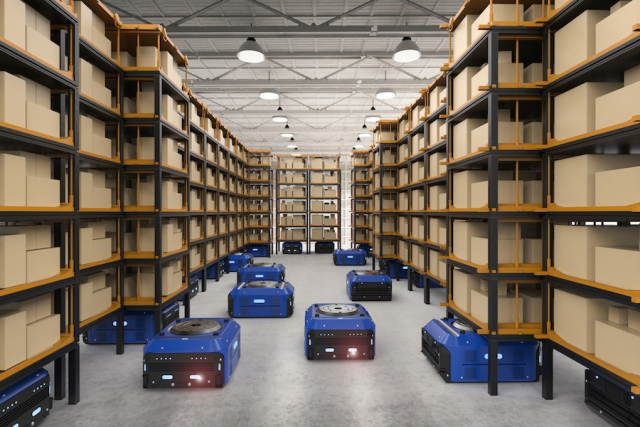
Insights
37-Year High For US Manufacturing

U.S. manufacturing activity hit its highest point in more than 37 years in March, the Institute For Supply Management said Thursday. The last month alone marked the fastest rate of growth in the last 12 months, with the ISM index of national factory activity growing to a reading of 64.7% in March from 60.8% in February.
The index has grown for four consecutive months. It rose to 59.6% in March, its highest reading since February 2018, and 5.2 percentage points higher than February reading of 54.4%. A reading above 50% indicates the manufacturing economy is expanding. The manufacturing sector makes up about 11.39% of the U.S. economy, according to the National Association of Manufacturers.
Also, in a new report released on Monday by the Dallas Fed, Texas manufacturers expressed a highly optimistic outlook about the industry. The production index has never been higher in the history of the Fed’s Texas Manufacturing Outlook Survey. This data, along with greater demand involving new orders, suggests that the U.S. manufacturing industry will continue to grow at a fast pace.
We’re More Vulnerable Than We Realize

All it took was a gust of wind and an apparently inattentive crew that was moving too fast in the Suez Canal to disrupt global shipping. About 12% of all international trade moves through the 120-mile long Suez Canal. More than 230 ships are in a massive traffic jam that is growing exponentially at a loss estimated at $400 million per hour. There are 20 livestock ships stuck in the canal and the live animals onboard could soon perish if the ships cannot move.
Freeing the massive container vessel is no easy task. There’s a risk that the vessel could capsize, blocking the canal for many months or longer.
This event, like the COVID-19 pandemic was not expected, but it was foreseeable. Imagine if the Panama Canal also became blocked. It’s time that a proactive and smarter approach is taken when it comes to the movement of goods. Technology and strategies exist to improve this situation.
Global supply chain and logistics risks are not going away, in fact, they’re increasing. The economic benefits that once motived mass offshoring of manufacturing and supply chains no longer exist. That’s why companies should localize their manufacturing, logistics and supply chains, and many have decided to do just that.
North America Is Big Winner From Rail Merger

Canadian Pacific Railway’s proposed acquisition of US/Mexico railroad Kansas City Southern will create history’s first Canada-US-Mexico railroad, resulting in new service lanes and growth across North America.
Both companies announced Sunday morning that CP would seek to acquire KCS in a deal worth $29 billion, pending approval from the US Surface Transportation Board. If approved, the merger could be finalized by mid-2022.
“The new competition we will inject into the North American transportation market cannot happen soon enough, as the new [United States-Mexico-Canada] Trade Agreement among these three countries makes the efficient integration of the continent’s supply chains more important than ever before,” Keith Creel, CP president and CEO, said in a statement Sunday.
The merger would connect customers with 6 of the 7 largest metropolitan regions in North America, potentially reducing transit times, as well as, providing new and improved product offerings. The new railroad would immediately benefit containerized auto parts and finished automobiles moving between the US and Mexico.
Electric Semi Trucks On The Verge Of Mass Adoption

Research from Lawrence Berkeley National Lab shows that electric semi trucks and delivery trucks are less expensive to own and operate than diesel models and they are creating a financial motive for fleet and independent truck owners to demand more electric options from truck manufacturers.
Demand for battery-electric delivery trucks is growing rapidly, particularly in North America with Amazon alone planning to purchase 100,000 vehicles from Rivian during the coming decade.
For most fleet managers, operating costs are the single most critical factor in the choice of a truck, and the new study shows that EVs already have a significant advantage over conventional diesels. Even now, as the first long-haul models come to market, they have about a 13% ownership cost advantage over Class 8 diesels, according to Berkeley National Lab. The gap is expected to widen to as much as 50% by 2030, as the cost of batteries comes down.
“It is very exciting to see that heavy duty trucks can electrify much faster than what is commonly believed,” said Amol Phadke, lead author and staff scientist at Berkeley Lab. “Because electric trucks are already cheaper to own than diesel models, they are creating a financial motive for fleet and independent truck owners to demand more electric options from truck manufacturers.”
A Massive Shift to Supply Chain Resiliency

The once-in-a-century COVID-19 pandemic thrust supply chain challenges under the microscope, prompting many companies to accelerate plans for digitization and modernization. As a result, many companies are hardening their supply chains and shifting away from a focus on low-cost suppliers and lean inventory to a model that makes localization, stability and resiliency a priority.
Manufacturers are expected to invest in the industrial internet of things (IIoT) and B2B collaborative network ecosystems to support reshoring of strategic supplies that align with new government policies aimed at bolstering domestic manufacturing.
By the end of 2021, 90% of all manufacturing supply chains will have invested in the technology and business process transformation necessary to establish resiliency.
The goal is a fully transparent, semi-automated, real-time supply chain — one that provides true end-to-end visibility and traceability, and places a premium on resiliency to deliver a competitive advantage.
https://searcherp.techtarget.com/feature/The-future-of-supply-chains-is-here
Contact Us

